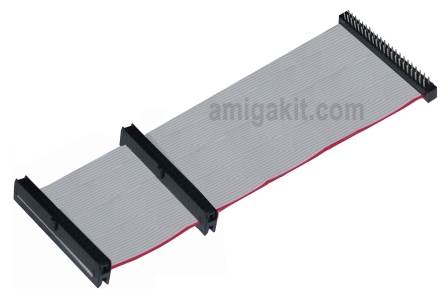You don't have to do any of that from the terminal. Trying to stand flat-footed and use a Linux terminal without any instruction or experience is a cruel joke. That's why we got you a desktop system, so you can take a few years to pick up the bitchin' ASCII art and Lynx skillz.
You don't know about users, standard file hierarchies, standard command syntax, standard help manuals, ...a lot of things. You couldn't possibly know. So just relax about it. You'll pick it up over time. Having a deep-OS task like a problem disk is why it's stressful at this point. My intro problem was getting Broadcom wireless going with Dapper Drake in the pre-B43 days on a lappy with a broken ethernet jack. I broke the entire operating system and had to reinstall at least twice before I figured it out. The rest I had the liberty of learning at my own pace, but I would still catch my hair on fire to figure things out because that shit's fun.
You also have a functional system you can rebuild from scratch in about 1/2 hour. You'll soon learn how to play fast and loose without needing a nap afterwards.

Giving terminal commands to sort shit out is simply a Linux internet convention, BTW. You have a desktop operating system. Most everything common has a desktop tool you can use with a mouse, but they differ in name and capability by Desktop Environment and distro. Choice, friend. Linux has it.

The BASH terminal (aka "shell") is pretty much common to all Linuxes, and the terminal is the most powerful tool in the computer, and terminal commands are usually similar between Debian-like distros. So most of the terminal commands that work on my Crunchbang will work on your Mint, because they share a lot of Debian DNA. This also applies to configuration file locations and paths, which are usually similar in distros based in the same bloodline, or package manager.
Moreover, if someone has already typed out the commands, pasting them into the terminal (aka 'command line") is ultimately easier for you and the computer than invoking a desktop program and selecting options. (WinXP command line didn't have C/P, you have to type everything.)
~$
sudo apt-get update && sudo apt-get dist-upgrade
sudo = superuser do = make yourself root for the duration of the command; prompts for a password unless you've entered it in the last few minutes
apt-get= package manager 'apt" fetch any updated from closest package repository mirror
&&=when the previous command finishes, start the next command
dist-upgrade=distribution upgrade=dist-upgrade "in addition to performing the function of upgrade, also intelligently handles changing dependencies with new versions of packages"
One hint I can give: since you have a desktop, you don't have to dick around with
vi or
nano or
emacs or any other terminal-based text editors. You can just invoke your desktop text editor. so instead of
vi etc/network/interfaces you can use
gedit etc/network/interfaces (or whatever your desktop text editor is) so you don't have to learn a new language to comment out a line of text or correct a misspelling. Editing text on a fucking terminal is a world unto itself. You don't want to go there.
Until you learn the names of your file manager and text editors (which vary by distro) and other common tools, call the sucker up from the desktop, go to the "About" or "Help" tab on the program, and read the name and version of the program. Looking around, your file manager may be "Caja", and it looks like a nutless Nautilus, so you probably have to go to a terminal and type "gksu caja" to open as Superuser to write and maybe read locked files. Invoke it from the desktop and do the "About" check I mentioned anyway. You can probably invoke it from the terminal by whatever that name is. Works for other programs too, but not all...

Did an image search and found this slideshow that might help make sense of all those folders you have scattered through your computer:
http://askubuntu.com/questions/138547/h ... tem-layout
http://www.slideshare.net/davidclark99/ ... management
==========================
Don't know if you've looked into your disk controller in BIOS yet, but you want to be sure you're running those drives as SATA, instead of some dead slow legacy protocol. There may be a lot of backwards compatibility between a new Mustang and an old Pinto, but they are not equivalent. Just make sure you are using the SATA controller to operate the disks in SATA mode. If you pulled the CMOS battery at some point, the mobo and its disk controller may have defaulted to douchebag settings. We just need to eliminate this as a source of non-mountability, since your computer's output shows the SATA controller in "IDE mode", as if there were others, like "SATA mode" or "On" or "Off".
Since Windows just quit working, I think the source of the original problem is that your old HDD has bad sectors or potential bad sectors under the MBR and/or its partitioning tables, which renders the HDD unreadable. So after you've confirmed your disk controller settings are indeed all they can be, you should run
~$ smartctl -a
Potential bad sectors may be reparable with a few clicks in your desktop Disk Management tool, which is probably the great gParted you've heard about.
Go into your disk utility from your desktop menu. Probably under Admin, or System, or maybe Accessories. Desktop menus vary.
You may have to ~$ sudo apt-get install gparted, which is a graphical program, so will pop up something to click at when you invoke it with ~$
sudo gparted
It should tell you you have a problem disk as soon as it comes up.
...



